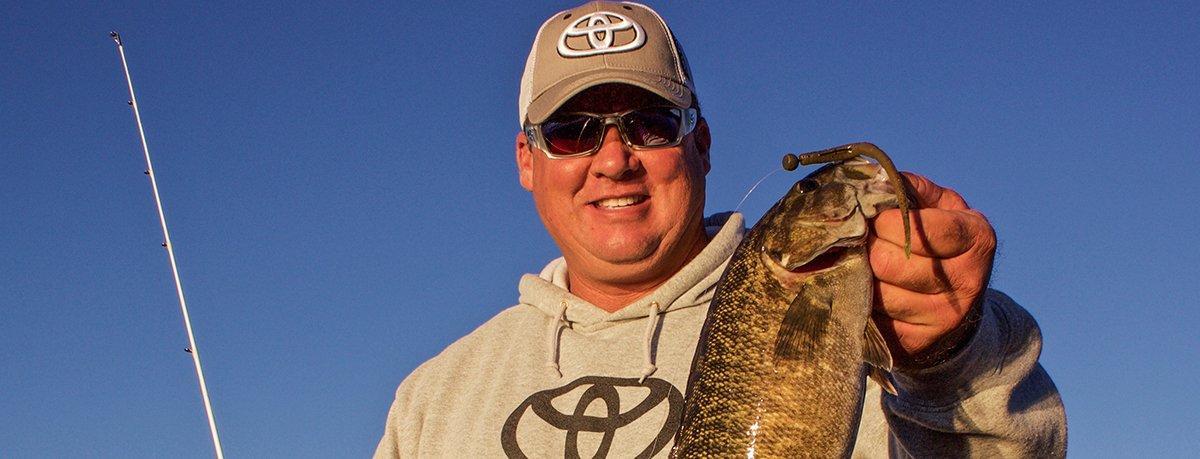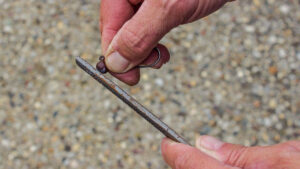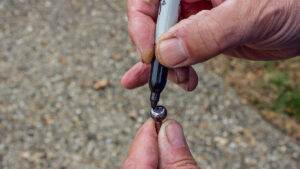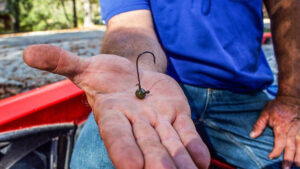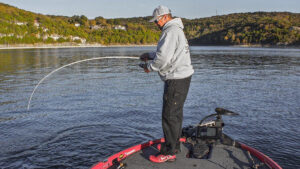Shaky heads catch a ton of bass. Whether you need to milk a spot for one more bite or you need to find out how many bass are in an area, it’s an excellent tool for the job.
Elite Series pro Terry Scroggins heavily relies on shaky heads for bass fishing, especially in cold weather conditions. A noted tackle tinkerer, Scroggins has found he can tailor make his shaky heads for certain scenarios by filing them and slightly changing their shapes.
How to file a shaky head
Scroggins has hundreds of tackle tweaks and modifications he makes to his gear, but this particular tip stands out because of how easy and downright effective it is.
“Lead is incredibly simple to work with,” Scroggins said. “Because it’s so soft, there are several ways you can shave a lead head down to the angle you want it. If I’m at home I use a bench grinder because it’s the fastest. But if I’m on the road or the lake, a file works excellently. Heck, I’ve even used 180-grit sandpaper wrapped around a two-by-four when I couldn’t find my files.”
Although there is no universal “perfect” angle due to individual angler preference, there are some basic guidelines that will make the process much simpler.
“Some folks want a shaky head to stand straight up, some want it slightly angled and others want it flat on the bottom,” Scroggins said. “I like mine to sit around a 45-degree angle. So essentially I just file diagonally on the back of the lead head until there’s a flat spot. It really just takes trial and error until you see the stand-up action you desire.”
When he’s finished tinkering with the angle of his shaky head, Scroggins pays close attention to covering the shiny lead spot left on the jighead.
“I’m a big proponent of painting the head with a powder coat,” Scroggins said. “If you’re fishing a clear body of water and have the materials, I think you’ll get the most out of a shaky head by giving it a powder coat. But you can also just use a black permanent marker to dull the shininess of the lead after you file it. I do this all the time on the water.”
Why to shave a shaky head
“I just want my shaky heads to stand up,” Scroggins said. “If the fish are active and biting really well, a typical ball head will work just fine. But if the fish are lethargic like they tend to get when the water temperatures drop, I want my bait to soak in the strike zone for as long as possible.”
In addition to building a better action into his bait, Scroggins also uses his filing modification when he needs a certain weight of shaky head. Shaky heads have the tendency to get wedged in rocks or snags, causing break-offs to be regular occurrences. The ability to quickly file larger shaky heads down to the size he needs helps Scroggins avoid this problem.
“Filing a shaky head is much more than a preference of action,” Scroggins said. “Shaving a lead head down also allows you to dictate the weight of your lure. Fractions of ounces are everything when finesse fishing and knowing how to shave a shaky head will allow you to get your weight exactly right.
“If you’ve been catching them on a 3/16-ounce head but are starting to run low on supplies, or want more of that stand-up action, you can take a file to a 1/4-ounce shaky head. After quickly filing down the back of the head, you’ve turned your it into a 3/16-ounce head.”
Take Scroggins’ advice to heart. Knowing how and why to make small modifications to your existing tackle will help you in more ways than one.


